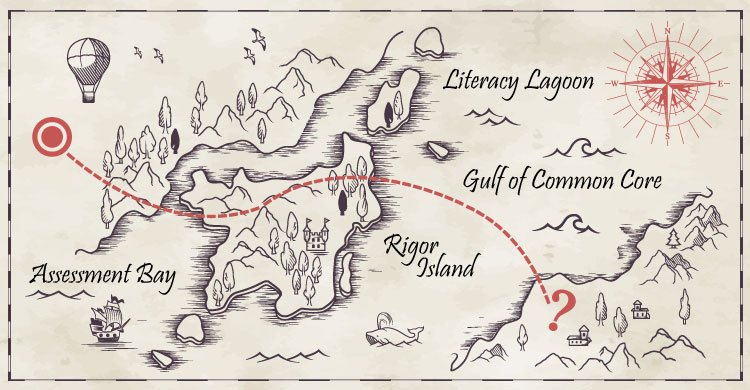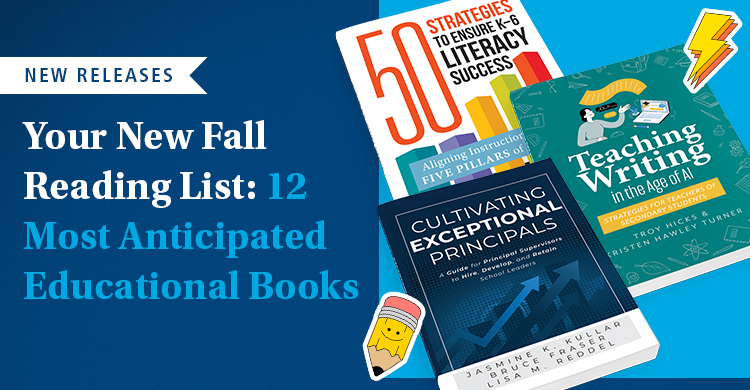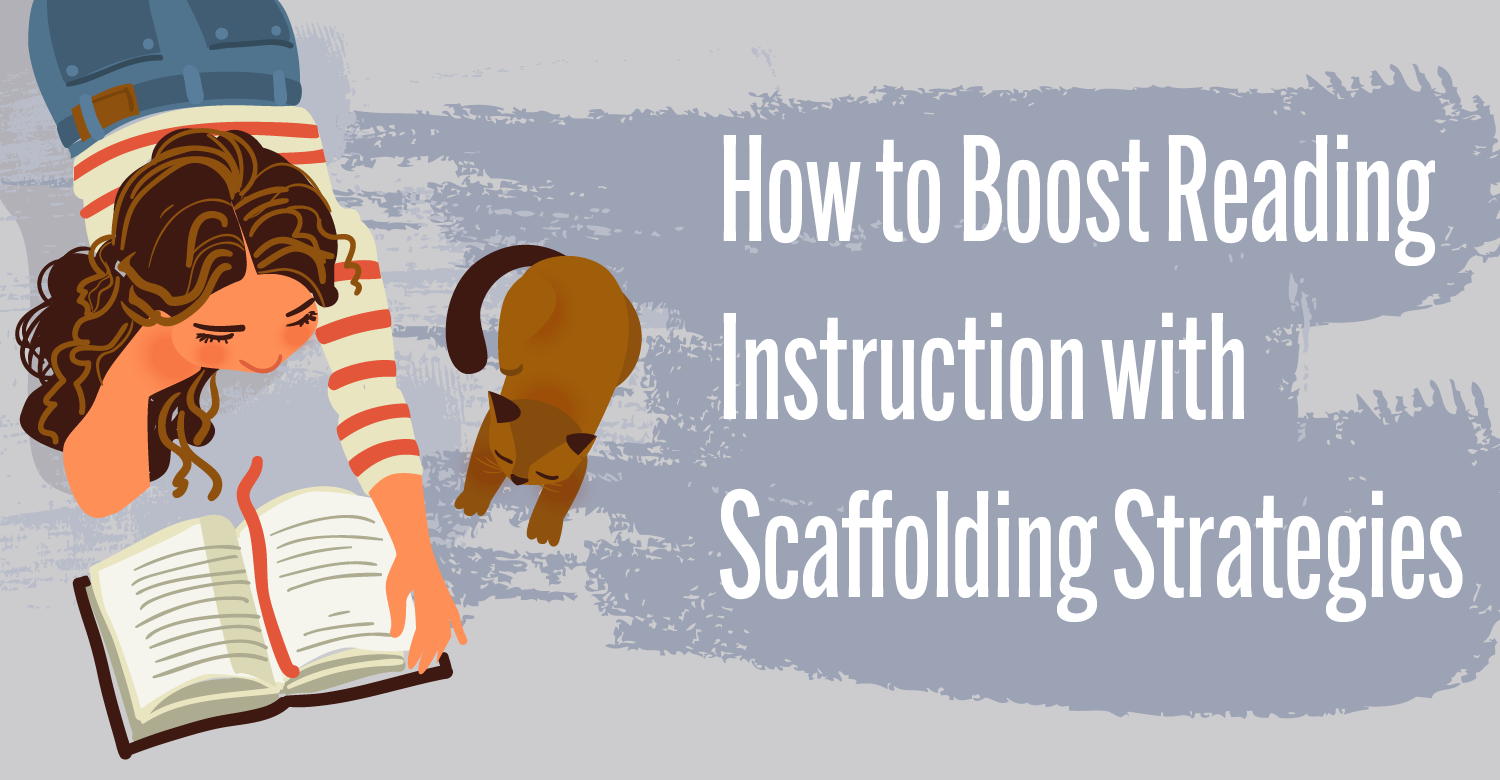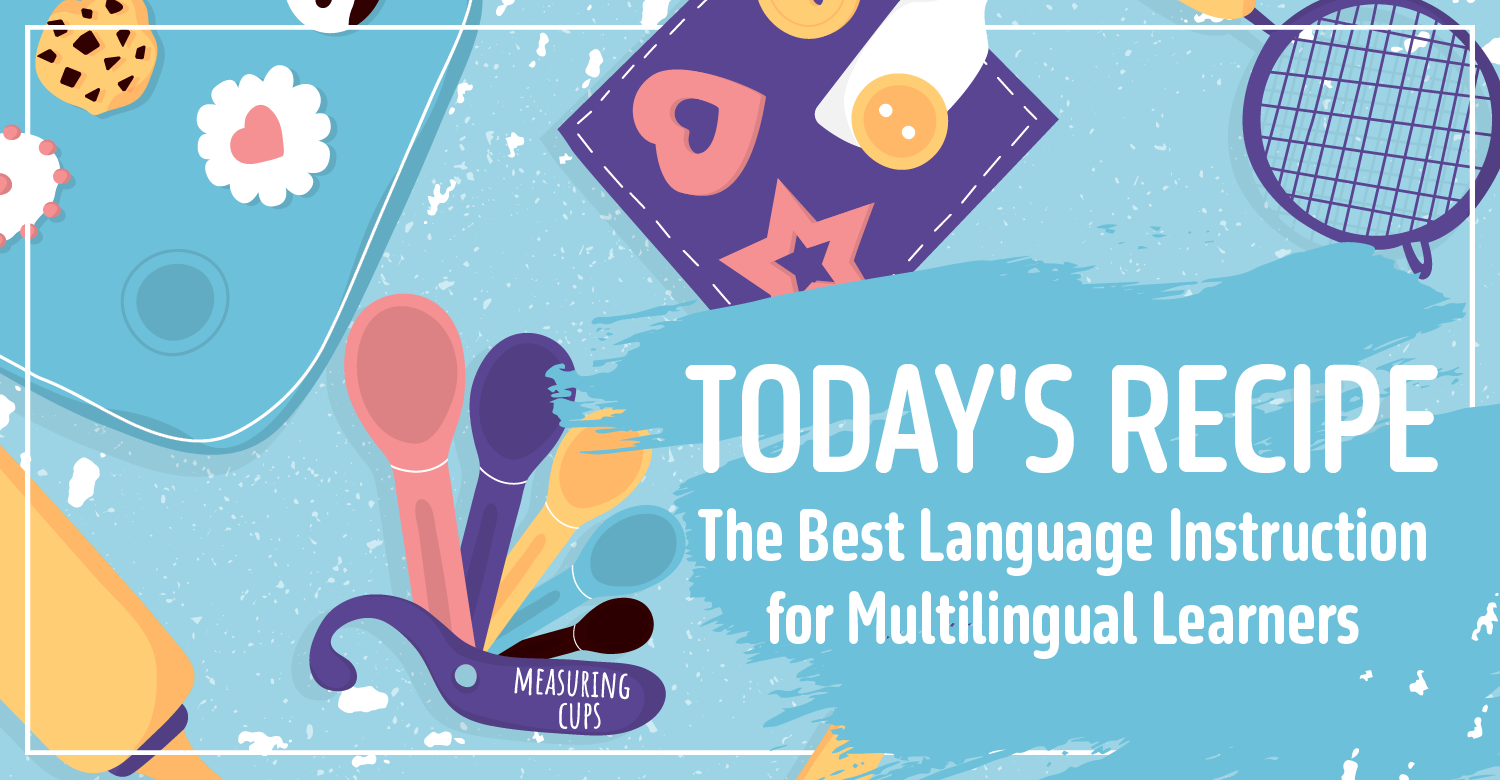Sometimes it’s called the “treasure box”; other times, it’s known as “that resource.” Once I heard it referred to as “the answer”—not an answer, mind you, but the answer. It’s that magical list of complex texts that are just right for your students; they’re the readily available, rigorous tasks sure to engage them deeply. Answers. Easy ones. Good ones.
Forgive then, my terrible, terrible news: that treasure doesn’t exist.
We all wish it did; under a looming shadow of vague standards and new assessments, having to make what feels like a thousand daily instructional decisions can be overwhelming and not a little perplexing. Often those decisions feel questionable, unstable; often we are sure we could have done better if we just had a better text or task. Is it any wonder, then, that in Year Seven of the Common Core we find ourselves still asking many of the same questions we had in Year One? Teachers still struggle to identify complex texts; a recent Education Trust (Santelises & Dabrowski, 2015) study shows a significant majority also fail to design and implement appropriately rigorous tasks. Heck, not a PD session goes by where I don’t run into a school and/or PLC team that’s still volleying over the meaning of terms: analysis, argument, complexity, etc.
A recent encounter with a team having this very conversation reminded me that not all struggles are productive, and the ones many of us have had around Common Core implementation ceased to be a long time ago. Our terms are all wrong, sure, but so is our thought process: we’re overcomplicating the wrong things and undercomplicating the right ones.
And it all starts and ends with our misconceptions about rigor.
Rigor Redefined
Yes, rigor is having another “moment.” Frankly, it was due: after years of fretting over unpacked standards, aligned curriculum, and the changes to high-stakes assessment systems, emphasis on daily instruction is needed—and wanted. Survey after survey of American teachers (e.g., Kaufman et al., 2016; Phillips, 2014) show a strong desire by educators to close the gap between their intentions of enacting rigorous instruction and their enactment of it.
Closing that gap means first getting clear on what rigor is. What I talk about when I talk about rigor is not the buzzwords—e.g., “creativity,” “21st century learning,” “critical thinking”—that we all nod to when watching a YouTube video and then subsequently ignore; I mean an operational definition, where rigor is a level or kind of work we can feel, see, and do. As anyone who has tried to teach the skill of evaluation can tell you, it’s a serious challenge to take things we often know and do tacitly and make them accessible for school-aged learners.
At its most elemental, rigor is simply teaching and learning that is “up to standard”—that is, meets the level of cognitive complexity or challenge of the standards or benchmarks guiding the learning (most likely the Common Core). Note the part about teaching and learning; rigor refers to both the instruction—the content or texts provided, the work or assessments administered, and so forth—and the efforts of the students, their understanding and/or work. The foundation of everything, then, is our shared understanding of what students know and should be able to do by the end of a given grade, as well as by how students are asked to demonstrate this understanding (e.g., college readiness exams such as the PARCC/SBAC, ACT/SAT, and so on).
I know this seems simple, almost reductively so, but humor me for a minute.
If you accept the basic premise of the definition, consider for a minute how so many schools—including, perhaps, your own—are going about addressing it by examining Depth of Knowledge (DoK). You know what I mean: checking tasks or activities to see under what level of complexity they fall, then trying to “up the rigor” by changing a verb or making it “more open-ended.”
We’re all doing it; it feels straightforward and easy (enough). And right.
I beg to differ.
First of all, if the standards determine what rigor is, we cannot engage in any exercise of assessing or adjusting task rigor without these benchmarks. Furthermore, because nearly every single CCSS literacy standard involves engagement of texts—their own and/or class readings—we also cannot reconsider rigor without our texts. And because rigor is not only the complexity of the task but also the quality of the student work on said task, we certainly cannot reconsider rigor without what students actually did—or, at least, our intended goals, outcomes, and/or criteria for said work.
So, tasks matter. Goals matter. What students read matters. This we all know. But lost in our conversations about rigor and text complexity and requiring-lesson- objectives-on-the-board is that these things are not discrete. In fact, their interaction in support of student learning determines whether rigor can be met—by both teacher and students. We can’t look at rigor and text complexity as separate issues; they are, in fact, the same. We can’t look at what we ask students to do as separate from our purpose, nor can that purpose be disconnected from our standardized expectation of what students should be doing; it is not rigor otherwise.
In short, rigor is in practice, not just planning. It is not determined by the language in the task prompt; rather, it is realized in action, through the interaction of reader, content, and activity. Our attention must be on the interaction—including the teacher and student interaction during learning—if we are truly to support increased rigor schoolwide.
So, rigor is not just due our attention but the kind of attention worthy of its demands and useful to you and/or your teachers’ classroom practice. I offer two ways to get started below.
Rigorous Rigor Conversations: Two Activities
Text-Task Scenarios
Text-Task Scenarios (TTS) is the term used by literacy researchers Valencia, Pearson, and Wixson (2011, 2014) to position the elements of complex instruction—the text, the task, the teacher’s structures and supports—in relation to, rather than in isolation of, one another. The authors argue that the reader/task component of the text complexity triangle has been undervalued and is actually the most critical piece to enabling effective reading instruction—hence, seeing text and task in a “scenario” with one another.
In practice, it’s a pretty simple concept: if you simultaneously consider the demands of the task and the task-relevant features of the text, you’re probably in a good place to determine the appropriate level of rigor and the supports students might need to realize it. The goal, as the authors note, is really to help teachers think about the conditions under which students can successfully comprehend and learn from text, not just whether a text is complex or not.
A TTS begins by identifying preliminary instructional goals, drawn from the standards, for the reading of a text or texts; the text is then read by the teacher(s) to determine the relevance and alignment of those goals to the text. Teachers can then either adjust their goals or discuss how to go about achieving those goals. Understanding the text vis-à-vis the goals will reveal logical task opportunities before, during, and after reading; it will also assist teachers in identifying those text or task features that are likely to inhibit or facilitate achievement of goals. For instance, teachers might identify a challenging paragraph that requires strategic rereading and/or a comprehension check and thus know the appropriate supports to provide.
Having identified the big picture (e.g., the lesson goals) and smaller ones (e.g., where, specifically, in the text students might have misconceptions), teachers can then proceed to plan the lesson(s).
Going in Reverse to Get Rigorous
What I call “Reverse Unpacking” is, indeed, a flip of the TTS: you start with finished/enacted instructional products and work backward to unpack the proper rigor for the instructional situation. This is especially useful for teachers who are struggling to fully visualize and internalize what it means to teach to these standards.
Reverse Unpacking goes something like this:
- Gather research: Find a host of instructional and assessment artifacts for the grade and/or standards you’re discussing—feel free to use examples from standardized assessments (e.g., PARCC, SAT), published curriculum (e.g., Engage NY, textbook resources), your own lessons and units, etc. Make sure to have a mix of things.
- Examine: With your colleagues, examine the components across these representations. What are the goals of the tasks? What are students being asked to read, and what is challenging (or enabling) about the texts? What are students actually being asked to demonstrate? Be sure to consider the text demands embedded in the task, how the task relates to the goals, and so forth.
- Synthesize: What conclusions can you draw about what it means to teach up to the demands of the goals/selected standard(s)? About what it means to demonstrate learning that is up to standard?
Now you know what the standards mean, what rigor looks like when addressing it, and how the text supports this work. You’re ready to apply your understanding back into your own teaching—and learning—around it.
Let me know how it goes at [email protected].
References:
Kaufman, J. H., Hamilton, L. S., Stecher, B. M., Naftel, S., Robbins, M., Thompson, L. E., Opfer, V. D. (2016). What supports do teachers need to help students meet Common Core State Standards for English language arts and literacy? Findings from the American Teacher and American School Leader Panels. Santa Monica, CA: RAND Corporation.
Phillips, V. (2014). Teachers Know Best: Teachers Views on Professional Development. Seattle, WA: Bill and Melinda Gates Foundation.
Santelises, S. B., & Dabrowski, J. (2015). Checking in: Do classroom assignments reflect today’s higher standards? Washington, DC: Education Trust.
Valencia, S. W., Pearson, P. D., & Wixson, K. K. (2011). Assessing and tracking progress in reading comprehension: The search for keystone elements in college and career readiness. Princeton, NJ: Center for K–12 Assessment & Performance Management at ETS.
Valencia, S. W., Wixson, K. K., & Pearson, P. D. (2014). Putting text complexity in context: Refocusing on comprehension of complex text. The Elementary School Journal, 115(2), 270-289.
[author_bio id=”49″]






